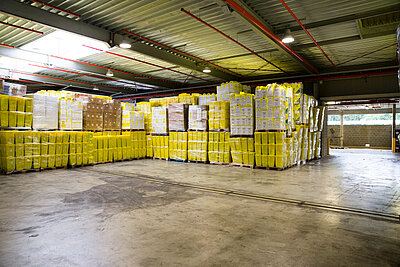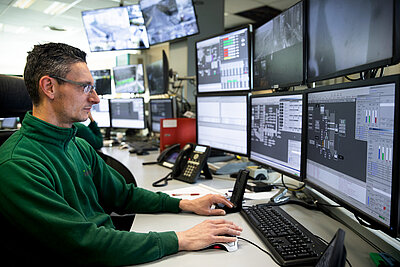MediPower Antwerp destroys contaminated material
Indaver is highly experienced in the treatment of hazardous medical waste (HMW). It sees it as its mission to prevent harmful or hazardous substances from ending up in the environment or in the food chain or materials chain by destroying this waste in its rotary kiln incinerators.
The waste is stored in the hospitals in suitable containers which have been approved for this type of waste by hospital hygienists. This packaging provides adequate protection to prevent the risk of contamination via the waste. For transportation of these containers to the Indaver facility, the standard guidelines for transportation of hazardous medical waste apply.
Inside the facility, the containers are supplied to the incinerator in their entirety using an automatic roller feeder system with conveyors, pushers and lifts. This enables us to treat them quickly with a minimum of manual handling and our employees are given optimum protection. Incineration in the rotary kiln at a temperature of 950 ℃ with post combustion in the post combustion chamber ensures the most complete possible destruction of all contaminants such as potentially infected material.
What if the volumes continue to rise?
We, together with all parties involved, have noted in recent weeks that the volumes of this waste are set to exceed capacity. We have received 65% more hospital waste in volume terms than usual. Indaver has played a major role in working with the government, experts, virologists and hospitals to come up with a plan of action to ensure the continued treatment of this waste. For example, in close collaboration with the province of Antwerp and the Port Authority, we have examined which locations might be eligible for temporary storage of hazardous medical waste (HMW). Mexico Natie offers a suitable solution and has provided a high-quality warehouse in Zwijndrecht for this purpose. This means that the waste can still be received from hospitals and its treatment can be spread out.
Extension of the definition of ‘NHMW’
A second solution to the increasing volumes of waste from the healthcare sector is to expand the definition of the term ‘non-hazardous medical waste’ (NHMW). NHMW may be treated in our grate incinerators. This too has been the subject of intense dialogue in recent weeks between us and the Flemish Public Waste Agency (OVAM), virologists, the hospital sector, waste treatment companies and hauliers. On the basis of a scientific risk evaluation, the decision has been taken to expand the waste fractions that can be included in non-hazardous medical waste. This specifically concerns objects that have been in contact with COVID-19 patients and may have been stained with bodily fluids to some extent, such as disposable linen and nursing materials. This waste stream must be stored for at least 72 hours at the care facility itself. Only after this waiting period may the waste be brought to grate incinerators like Indaver’s in Doel. Other hospital waste from COVID departments such as newspapers, magazines and leftover food from the patient as well as unstained gloves, masks and gowns were already previously labelled as NHMW.
This waste is deposited directly in the bunker and then placed inside the chutes of the incinerators using grippers. Due to the sufficiently long waiting period, the contamination risk of the waste has been reduced to that of common non-hazardous waste.
Protection of employees
At all our sites where HMW and NHMW are treated, we provide our employees with the personal protective equipment they need to be able to work safely at all times.


